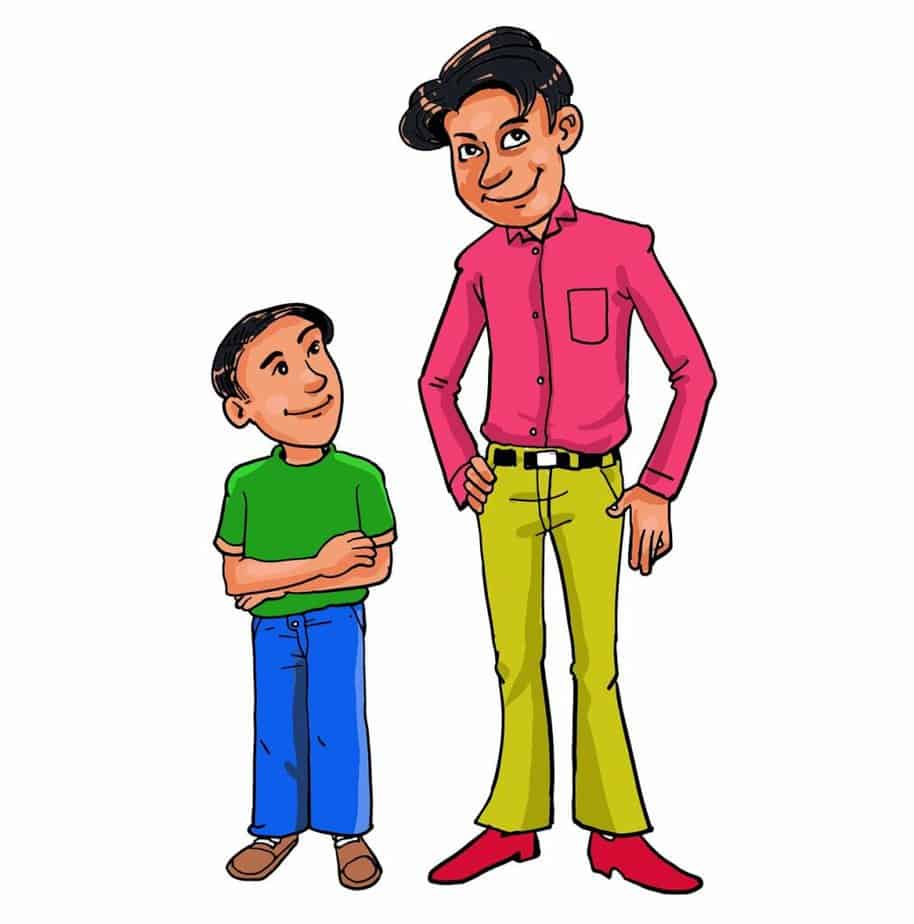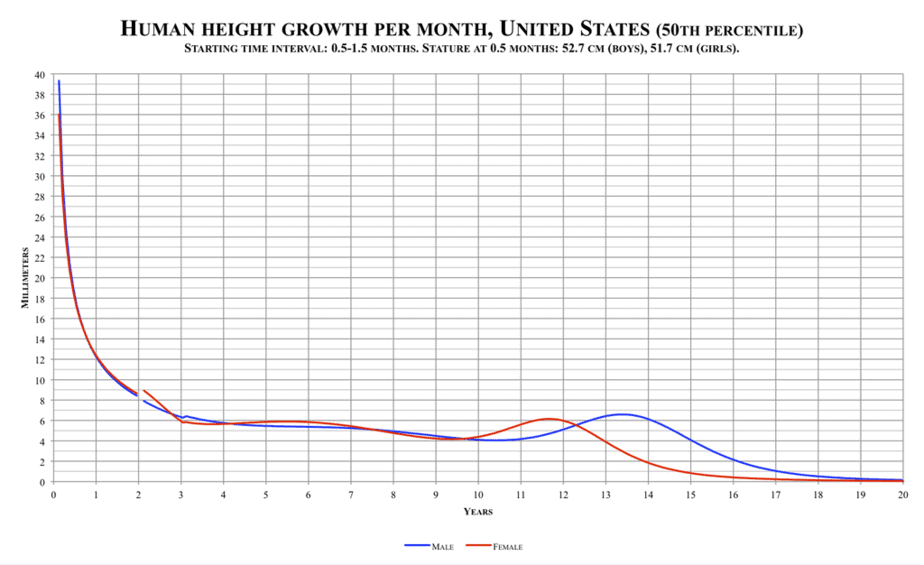Table of contents
Nebula Genomics DNA Report for Height
Is height genetic? We created a DNA report based on a study that attempted to answer this question. Below you can see a SAMPLE DNA report. To get your personalized DNA report, purchase our Whole Genome Sequencing!

Humans have a variety of vertical heights, from short to tall. Experts largely consider height a result of genetics. However, environmental factors, such as nutrition, may also influence the characteristic, making an individual shorter or taller than expected.
Is Height Genetic?
Overall, genetic factors are the most important indication of final adult height, with some experts estimating that about 80 percent of variations in an individual’s stature are predicted based on DNA. Researchers published this data in 2020 as a collection of genome-wide association studies of more than 4 million people.
In 2022, new research revealed that SNPs account for 40 percent of all variation in height for individuals of European ancestry, and 10-20 percent of variation for people of non-European ancestry. These scientists identified more than 12,000 genetic variants that influence height. Most of these contributions from individual genes are small, and it is the combination that ultimately results in height. Some of these genes influence pathways that impact skeletal growth plates, which help lengthen bones as children grow.

Because multiple genes are involved it is difficult to predict how tall a child will be. Generally, children will grow to be about the same height as their parents but different genetic combinations or growth disorders often result in siblings being different heights. In addition, other biological features, such as hormones, may have a larger influence on height.
Genes involved
Unlike the combination of genes with minor influences, scientists have identified some genetic features that strongly influence the characteristic. Medline Plus defines some of these genes:
FGFR3: This is a rare genetic mutation involved in bone and brain tissue development. Specific mutations in this gene cause almost all cases of achondroplasia, a form of short-limbed dwarfism. The mutations cause this gene to be overly active and interfere with skeletal development.
FBN1: This gene codes for the protein that allows microfibrils to form. These molecules form elastic fibers, which enable the skin, ligaments, and blood vessels to stretch. They also support other structures like bones, nerves, and muscles.
Experts have identified at least nine FBN1 gene mutations in people with acromicric dysplasia, which leads to severely short height, short limbs, stiff joints, and distinctive facial features. Additionally, they have associated over 1,000 gene mutations in this gene with Marfan syndrome, which affects the connective tissue in the body. These individuals tend to be tall and slender with elongated fingers and toes and other skeletal abnormalities like long bones.
More genes for genetic height
GH1: This gene encodes for a growth hormone protein. Gene mutations can cause isolated growth hormone deficiency, which causes slow growth and short stature.
EVC: The function of the protein that this gene codes for is unknown. However, experts believe it is involved in normal growth and development. Mutations in this gene cause Ellis-van Creveld syndrome, characterized by dwarfism, abnormal nails and teeth, and heart defects.
Experts have also associated at least one mutation in this gene with Weyers acrofacial dysostosis. This condition is similar, but usually milder, than Ellis-van Creveld syndrome.
GPC3: This gene encodes for a protein involved with cell growth and division. In most cases, it appears to restrict growth although it may have the opposite effect in some parts of the body. Several mutations in this gene may cause Simpson-Golabi-Behmel syndrome, a condition characterized by infants larger than normal at birth that continue to grow and gain weight at an accelerated rate.
Other Factors that Impact Height
Other factors besides genetics contribute to an individual’s height. These environmental factors are especially important during childhood and adolescence.
Nutrition
Adequate nutrition during childhood tends to be very important for reaching the height dictated by genetics. A healthy, balanced diet will allow your body to develop normally and often maximize your stature. On the other hand, a poor diet can affect height by stunting growth and reducing the normal development of bones and muscles.
A mother’s nutrition during pregnancy can also influence genetic height, as can factors such as smoking or exposure to hazardous substances.
Socioeconomic status
This factor is often related to nutrition. It has been shown that children in poorer socioeconomic conditions have less access to healthy nutrition and good child and health care. This can affect their growth and health, which can lead to shorter stature.
Gender
Girls tend to be taller than boys during adolescence due to earlier puberty milestones. However, adult men tend to have a taller average height than female adults.

Due to this sexual size dimorphism, people tend to wonder, “does testosterone make you taller?”. Studies have shown that testosterone levels stimulate growth hormone production during puberty. Since this growth spurt has a major effect on height, testosterone production can be associated with increased height as well as other features such as muscle mass. Testosterone increase is just one of the sex hormones that affects this characteristic.
Hormones
Hormones are essential for growth during puberty. Hormonal abnormalities can reduce an individual’s overall height. For example, hypothyroidism can reduce height compared to genetic predisposition. Conditions involving the pituitary gland can also reduce height.
Interestingly, hormones are controlled by genetics, indicating that there may be an indirect genetic component to those of short stature caused by one of these abnormalities.
Your body releases human growth hormone and thyroid-stimulating hormones during deep sleep. Sleep deprivation can cause you to stop growing. So, technically, some say sleeping makes you taller. However, there is no conclusive scientific evidence that sleeping makes you grow taller yet.
Current research on Height and Genetics
In 2018, The Journal of Clinical Endocrinology and Metabolism published a review of the rationale behind genome-wide association studies (GWASs) and how the last decade of studies have helped us better understand the underlying biology of height.
The scientific magazine eLife published this study that points out uncorrected stratification in genome-wide association studies, leading to overestimating polygenic adaptation on height. It is important to highlight here that height is a polygenic trait, meaning that the combination of many genes determines it.
These studies on population have taken samples from European ancestry participants. Furthermore, the first GWAS study on height was performed on 4921 individuals of European ancestry.
This paper from 2019 explains why structure matters when dealing with population genetics. The study focuses on human height as a classic example of a trait determined by genetics, specifically, a variation in a very large number of genes. But it also cautions that there are strong environmental factors that also have an influence.
In December 2019, scientists held a Mendelian randomization study and found that genetically predicted height is a positive causal risk factor for atrial fibrillation, a common cardiac arrhythmia.
If you liked this article, you should check out our other posts in the Nebula Research Library!
June 2, 2023
